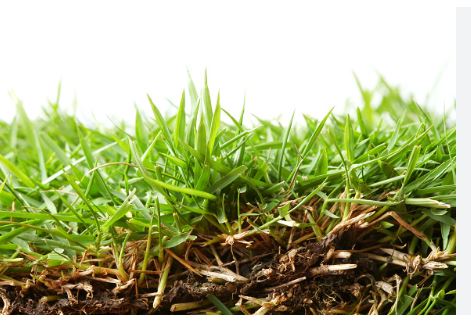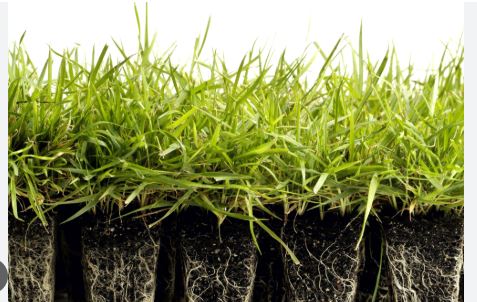
Zoysiagrass (Zoysia spp.) is a warm-season turfgrass genus native to Southeast Asia, prized for its dense, carpet-like growth via stolons and rhizomes. It thrives in USDA Zones 6–11, tolerating heat (up to 95°F), drought, and moderate shade, though it prefers full sun. Its tough, wiry blades form a resilient sod, ideal for lawns, golf courses, and sports fields.
The genus includes three main species—Zoysia japonica (coarser, cold-hardy), Zoysia matrella (finer, shade-tolerant), and Zoysia tenuifolia (delicate, ornamental)—plus hybrids blending traits. Blade widths range from 0.5–6 mm, colors from light to dark green, and textures from stiff to velvety. It turns tan-brown in dormancy below 50°F, greening up in spring.
Growing best on well-drained soil (pH 6.0–7.0), Zoysiagrass establishes slowly—1–3 seasons from seed, sod, or plugs—spreading 0.5–3 feet annually. Plant in spring or early summer, water 1 inch weekly during establishment, and mow at 0.25–3 inches depending on variety and use. Its slow growth reduces mowing frequency but delays full coverage.
Maintenance includes 1–3 lbs nitrogen per 1,000 sq ft yearly, dethatching to manage buildup, and monitoring for large patch disease in humid conditions. It resists pests and weeds naturally due to its density and silica content, though thatch and slow recovery from wear can challenge high-traffic areas. Irrigation needs drop once established, enhancing drought tolerance.
Zoysiagrass suits varied landscapes—coarse types for rugged use, fine ones for manicured aesthetics. Its durability, low water needs, and adaptability make it a sustainable choice, though initial cost and patience for establishment are trade-offs. From rough lawns to putting greens, it balances beauty and function across climates.

Types of Zoysiagrass
Meyer Zoysiagrass (Zoysia japonica ‘Meyer’)
Meyer, introduced in 1951 by the USDA, is a medium-coarse textured cultivar with blades 3–5 mm wide, dark green in summer, and tan-brown in dormancy. Growing to 6–8 inches unmowed, its dense, upright habit suits lawns and fairways. Hardy to USDA Zone 6 (-10°F), it excels in cooler climates, maturing in 90–120 days from plugs or sod on well-drained soil (pH 6.0–7.0). It tolerates full sun, moderate shade (4–6 hours sunlight), and drought, though its slow growth (covering 1–2 feet laterally per year) delays establishment—often 2–3 seasons. Mow at 1–2 inches with a sharp rotary or reel mower to avoid tearing its stiff blades. High in silica, it resists pests but builds thatch, needing annual dethatching. It’s ideal for home lawns and golf courses, offering 2–3 lbs nitrogen per 1,000 sq ft annually.
Emerald Zoysiagrass (Zoysia matrella × Zoysia japonica ‘Emerald’)
Emerald, a 1955 hybrid from Georgia, boasts fine, narrow blades (1.5–2 mm) and a lush, emerald-green hue, making it a premium lawn choice. Its dense, low growth (4–6 inches unmowed) mimics velvet, thriving in Zones 7–10 (0°F–20°F) with excellent shade tolerance (3–4 hours sunlight). Planted via sod or plugs, it spreads moderately (1–1.5 feet/year) on sandy or clay soils (pH 6.0–6.5), maturing in 1–2 seasons with irrigation. Mow at 0.5–1.5 inches with a reel mower for precision; its slow recuperation suits low-traffic areas. Drought-tolerant with shallow roots, it needs 1 inch of water weekly in summer and 1–2 lbs nitrogen yearly. Resistant to insects, it’s susceptible to large patch disease in humid conditions.
Zenith Zoysiagrass (Zoysia japonica ‘Zenith’)
Zenith, a seeded japonica cultivar, features medium-coarse blades (3–4 mm), a medium-green color, and a vigorous, upright form reaching 6–10 inches unmowed. Developed for broader adaptability (Zones 6–9), it tolerates cold (to -5°F) and drought, growing on varied soils (pH 5.5–7.0). Seeding at 1–2 lbs per 1,000 sq ft in spring (April–June) takes 2–3 weeks to germinate and 12–18 months to establish, needing light exposure and frequent, light watering. Mow at 1–2 inches with a rotary mower; its moderate spread (1–2 feet/year) suits lawns and sports fields. It offers 30% better wear tolerance than finer types, requiring 2–3 lbs nitrogen annually, though seed quality varies.
Palisades Zoysiagrass (Zoysia japonica ‘Palisades’)
Palisades, a Texas A&M release (1996), has medium-coarse blades (4–5 mm), a bright green color, and an upright, aggressive growth habit (2–3 feet/year laterally). Hardy to Zone 6b (-5°F), it excels in full sun to partial shade (4–6 hours) on clay, loam, or sand (pH 6.0–7.0), maturing in 1–2 seasons from sod. Mow at 0.5–3 inches with a rotary or reel mower, suiting lawns, tee boxes, and fairways. Its deep roots enhance drought tolerance (surviving 2–3 weeks without water), needing 1 inch weekly in peak heat and 2–3 lbs nitrogen yearly. Wear-resistant, it’s prone to thatch and large patch in wet climates.
El Toro Zoysiagrass (Zoysia japonica ‘El Toro’)
El Toro, released in 1986 from California, features coarse blades (4–6 mm), a dark green hue, and faster establishment (2–2.5 feet/year) than Meyer. Hardy to Zone 6 (-10°F), it grows in full sun to moderate shade (4–6 hours) on diverse soils (pH 6.0–6.5), maturing in 1–2 seasons from sod or plugs. Mow at 1–2 inches with a rotary mower; its upright habit suits high-traffic lawns and golf courses. Drought-tolerant with good cool-season color, it needs 1 inch of water weekly and 2–3 lbs nitrogen annually. It resists rust but is vulnerable to large patch disease, with less thatch than Meyer.
Empire Zoysiagrass (Zoysia japonica ‘Empire’)
Empire, a Brazilian-bred japonica (1990s), has medium-coarse blades (4–5 mm), a vibrant green color, and a dense, spreading habit (2–3 feet/year). Suited to Zones 7–10 (0°F–20°F), it thrives in full sun to partial shade (4–6 hours) on sandy or clay soils (pH 6.0–7.0), establishing in 1–2 seasons via sod. Mow at 1–2 inches with a rotary mower; its aggressive rhizomes make it ideal for lawns and sports fields. Drought and wear-tolerant, it needs 1 inch of water weekly and 2–3 lbs nitrogen yearly. It seeds heavily in tropics and is susceptible to large patch in humid areas.
Cavalier Zoysiagrass (Zoysia matrella ‘Cavalier’)
Cavalier, a Texas A&M cultivar (1990s), offers fine blades (1.5–2 mm), a soft, emerald-green texture, and a low, dense growth (4–6 inches unmowed). Adapted to Zones 7–10 (0°F–20°F), it excels in shade (3–4 hours sunlight) on well-drained soil (pH 6.0–6.5), maturing in 1–2 seasons from sod. Mow at 0.5–1.5 inches with a reel mower for lawns or greens; its slow spread (1–1.5 feet/year) suits low-traffic areas. Drought-tolerant but less cold-hardy than Emerald, it needs 1 inch of water weekly and 1–2 lbs nitrogen annually. Pest-resistant, it’s prone to thatch buildup.
Zeon Zoysiagrass (Zoysia matrella ‘Zeon’)
Zeon, a modern matrella cultivar, features very fine blades (1–2 mm), a translucent green color, and a soft, dense mat (4–6 inches unmowed). Hardy to Zone 7 (0°F), it thrives in full sun to shade (3–4 hours) on varied soils (pH 6.0–6.5), establishing in 1–2 seasons from sod. Mow at 0.5–2 inches with a reel mower, ideal for lawns, fairways, or “barefoot” landscapes. Its deep roots boost drought tolerance (2–3 weeks without water), needing 1 inch weekly and 1–2 lbs nitrogen yearly. Highly wear-tolerant, it resists pests but requires dethatching.
Innovation Zoysiagrass (Zoysia japonica × Zoysia matrella ‘Innovation’)
Innovation, a hybrid from North Carolina (2010s), blends medium blades (2.5–3.5 mm), a dark green hue, and a dense, upright form. Hardy to Zone 6 (-10°F), it grows in full sun to moderate shade (4–6 hours) on clay or loam (pH 6.0–7.0), maturing in 1–2 seasons from sod. Mow at 0.5–2 inches with a rotary or reel mower, fitting sports fields and lawns. Cold and drought-tolerant, it needs 1 inch of water weekly and 2–3 lbs nitrogen annually. It balances japonica vigor with matrella finesse, resisting pests but building thatch.
JaMur Zoysiagrass (Zoysia japonica ‘JaMur’)
JaMur, a japonica cultivar (1990s), has medium-coarse blades (3–5 mm), a rich green color, and a fast-spreading habit (2–3 feet/year). Suited to Zones 6–9 (-5°F–15°F), it thrives in full sun to partial shade (4–6 hours) on diverse soils (pH 6.0–6.5), establishing in 1–2 seasons from sod. Mow at 1–2 inches with a rotary mower; its density suits lawns and athletic fields. Drought-tolerant with deep roots, it needs 1 inch of water weekly and 2–3 lbs nitrogen yearly. Wear-resistant, it’s prone to large patch in wet conditions.
Geo Zoysiagrass (Zoysia japonica × Zoysia matrella ‘Geo’)
Geo, a hybrid cultivar, features medium-fine blades (2–3 mm), a bright green hue, and a dense, low growth (4–8 inches unmowed). Adapted to Zones 6–10 (-5°F–20°F), it grows in full sun to shade (3–4 hours) on sandy or clay soils (pH 6.0–6.5), maturing in 1–2 seasons from sod. Mow at 0.5–2 inches with a reel or rotary mower, ideal for lawns and golf courses. Drought and shade-tolerant, it needs 1 inch of water weekly and 1–2 lbs nitrogen annually. It resists pests but requires thatch management.
Zorro Zoysiagrass (Zoysia matrella ‘Zorro’)
Zorro, a Texas A&M matrella cultivar (2001), has ultra-fine blades (1–2 mm), a dark green color, and a soft, dense texture (4–6 inches unmowed). Hardy to Zone 7 (0°F), it excels in shade (3–4 hours) on well-drained soil (pH 6.0–6.5), establishing in 1–2 seasons from sod. Mow at 0.5–1.5 inches with a reel mower for lawns or greens; its slow spread (1–1.5 feet/year) suits low-traffic sites. Drought-tolerant, it needs 1 inch of water weekly and 1–2 lbs nitrogen yearly. Pest-resistant, it’s vulnerable to cold and thatch.
Compadre Zoysiagrass (Zoysia japonica ‘Compadre’)
Compadre, a seeded japonica cultivar, offers medium-coarse blades (3–4 mm), a medium-green hue, and a vigorous, upright form (6–10 inches unmowed). Suited to Zones 6–9 (-5°F–15°F), it tolerates full sun and moderate drought on varied soils (pH 5.5–7.0), taking 12–18 months to establish from seed (1–2 lbs/1,000 sq ft). Mow at 1–2 inches with a rotary mower; it’s great for lawns and parks. It needs 1 inch of water weekly and 2–3 lbs nitrogen annually, offering good wear tolerance but variable seed performance.
Diamond Zoysiagrass (Zoysia matrella ‘Diamond’)
Diamond, a fine-textured matrella cultivar (1996), has narrow blades (1–1.5 mm), a dark green color, and a low, dense growth (3–5 inches unmowed). Hardy to Zone 7 (0°F), it thrives in shade (3–4 hours) on well-drained soil (pH 6.0–6.5), maturing in 1–2 seasons from sod. Mow at 0.25–1 inch with a reel mower, perfect for putting greens or lawns. Drought-tolerant with shallow roots, it needs 1 inch of water weekly and 1–2 lbs nitrogen yearly. It resists pests but struggles with cold and heavy traffic.
L1F Zoysiagrass (Zoysia matrella ‘L1F’)
L1F, a modern matrella hybrid, features ultra-fine blades (1–2 mm), a vibrant green hue, and a dense, low profile (3–5 inches unmowed). Adapted to Zones 7–10 (0°F–20°F), it excels in shade (3–4 hours) on sandy or loam soils (pH 6.0–6.5), establishing in 1–2 seasons from sod. Mow at 0.25–1.5 inches with a reel mower, ideal for greens or luxury lawns. Drought and wear-tolerant, it needs 1 inch of water weekly and 1–2 lbs nitrogen annually. It resists diseases but requires careful thatch control.
Korean Velvet Grass (Zoysia tenuifolia)
Korean Velvet Grass (Zoysia tenuifolia), a species, has the finest blades (0.5–1 mm), a light green color, and a slow-growing, mounding habit (6–12 inches unmowed). Suited to Zones 8–11 (10°F–30°F), it prefers full sun to light shade on sandy soil (pH 6.0–6.5), taking 2–3 seasons to spread (0.5–1 foot/year) from plugs. Mow at 1–2 inches with a rotary mower; its delicate texture suits ground cover or ornamental use. Less drought-tolerant, it needs 1 inch of water weekly and 1–2 lbs nitrogen yearly. It’s pest-resistant but cold-sensitive.